Resources
4 min read
For accurate and effective performance testing, synthetic monitoring has become a staple and this is only going to continue in the coming years. This is mainly due to the fact that this process is beneficial and offers numerous advantages to organizations. With synthetic monitoring, your organization can identify performance issues before they affect real users. By continuously simulating user interactions, your team can highlight and rectify performance bottlenecks and infrastructure issues in real time. As well as this, synthetic monitoring can be effectively utilized for capacity planning and scalability testing by simulating high-traffic scenarios and tracking application performance under load. It can aid your organization in preparing for peak traffic periods and guarantee the scalability of your infrastructure.
However, for synthetic monitoring script development and maintenance are required, which can be complex. Designing accurate and effective scripts to simulate user interactions requires full comprehension of the application's functionality and user behavior. Script development entails highlighting critical user journeys, outlining script logic, managing dynamic elements, and guaranteeing scripts are resilient to changes in the application. Also, as applications change over time, scripts need to be updated to reflect changes in functionality, user interface elements, or underlying technologies, which can be particularly time-consuming and challenging.
With the extensive benefits of executing synthetic monitoring, it's clear that this is an advantageous process, but the challenges associated with synthetic monitoring make it difficult for it to be conducted without assistance. Therefore synthetic monitoring tools should be used to simplify the process. Due to the broad variety of synthetic monitoring tools available, you can select a tool that best suits your organization's requirements, such as your team's knowledge and experience of the process or your organization's financial constraints. So, to assist you with this we have outlined what synthetic monitoring entails as well as list 10 of the best synthetic monitoring tools to help you make an informed decision.
Contents
What is Synthetic Monitoring?
Synthetic monitoring is a practice utilized to track the performance and behavior of applications or systems by simulating user interactions. Unlike traditional monitoring methods that depend on real user data, synthetic monitoring entails the creation of artificial transactions or scripts to mimic user behavior and monitor how applications respond to these interactions.
Kentik
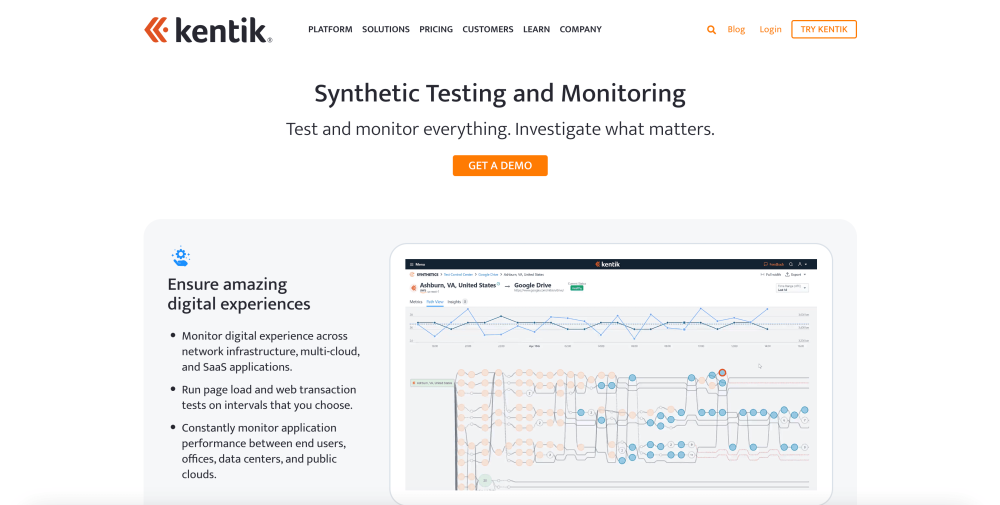
The first tool to make our list of the leading synthetic monitoring tools is Kentik. The tool aims to make network monitoring and testing simpler by allowing you to plan synthetic tests based on your actual network traffic and you can update these as patterns change. As well as this, you have the ability to promptly zoom into specific tests and understand details of your traffic’s path so you can narrow down to the source of problems.
AppDynamics
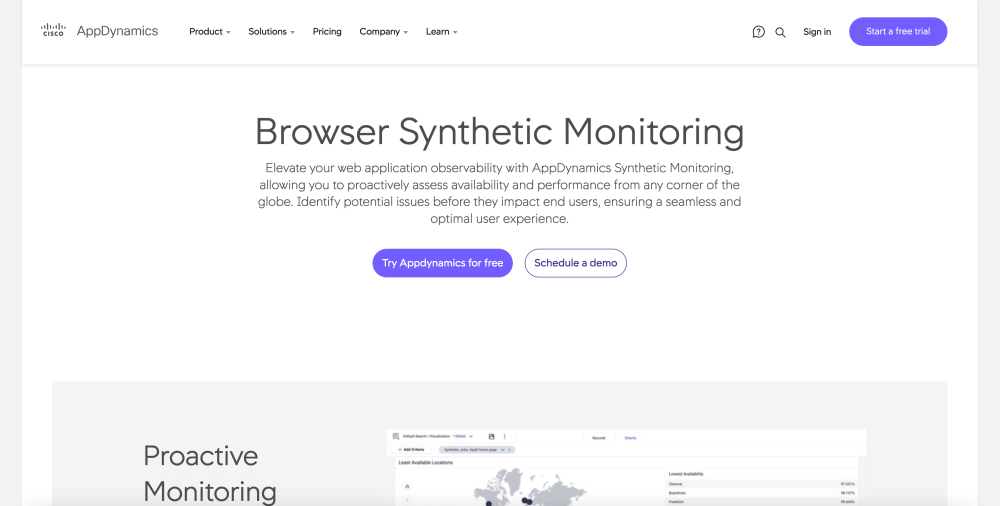
The next tool on our list is AppDynamics, a Cisco Smart Agent. This tool focuses on enhancing your web applications observability by enabling you to proactively assess availability and performance. This solution goes beyond the standard capabilities of a synthetic monitoring tool by offering visibility across the entire stack application, infrastructure, database, and internet network. As well as this, you can track API availability and performance across the entire application stack, including microservices and serverless functions, and public and private APIs.
Logit.io
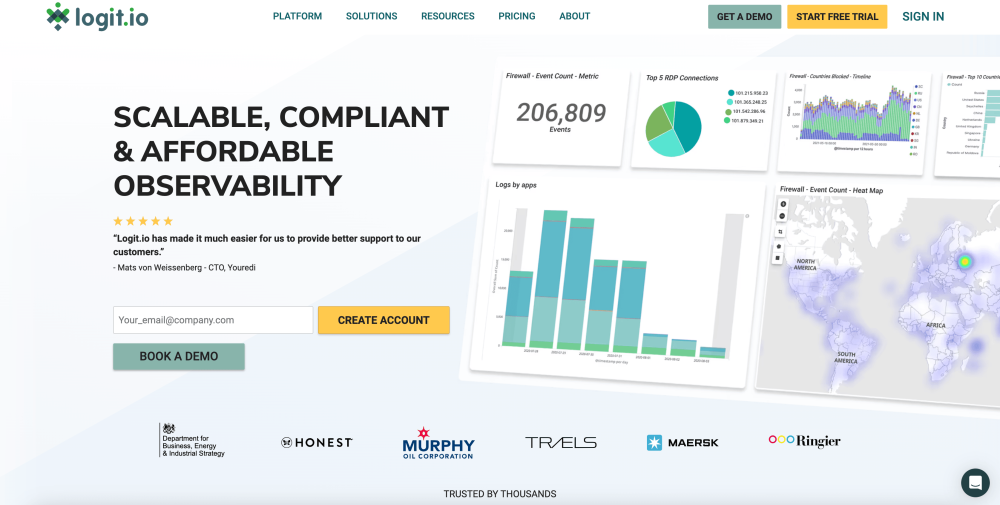
With Logit.io’s network monitoring tool, you can effectively conduct synthetic monitoring by configuring and running a Telegraf agent to collect synthetic monitoring data. This data can then be visualized for accurate monitoring and analysis in the Logit.io dashboard or shipped from our dashboard to any of our hosted solutions including hosted Grafana and hosted Prometheus.
SmartBear AlertSite
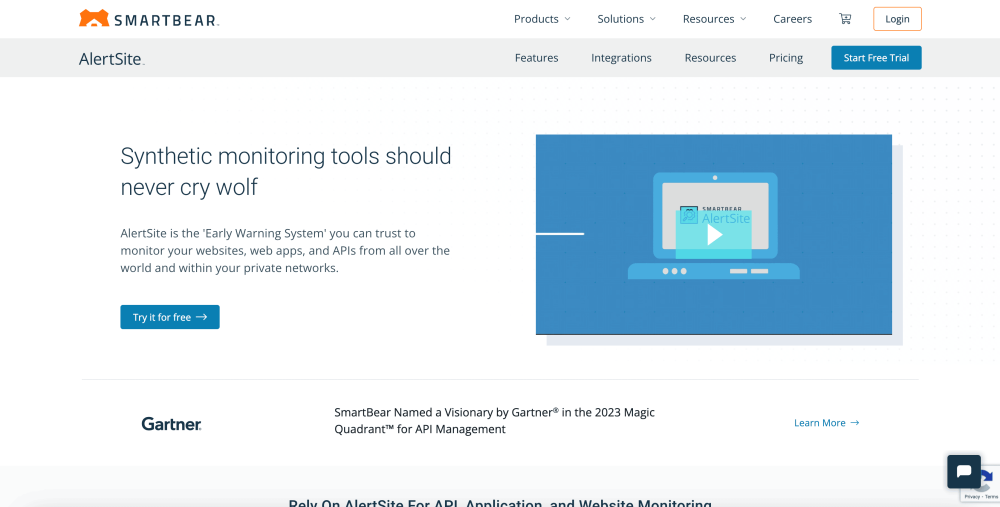
Another tool that has been included in the list is SmartBear’s AlertSite. The tool describes itself as the ‘early warning system’ you can trust to track your websites and web apps. With this synthetic monitoring tool, you can add codeless web monitors with DejaClick, and API Monitors in a few clicks using an API Endpoint URL or OpenAPI Specification file. As well as this, the tool highlights availability and performance metrics that aid in identifying the root cause of the performance issue.
Catchpoint

Catchpoint is the only provider to offer both synthetic monitoring and internet synthetic monitoring. With Internet synthetic monitoring you’re able to to emulate actual end-user behavior by testing and monitoring all your Internet stack components including backbone, wireless, last-mile nodes, and cloud nodes.
Dotcom-Monitor
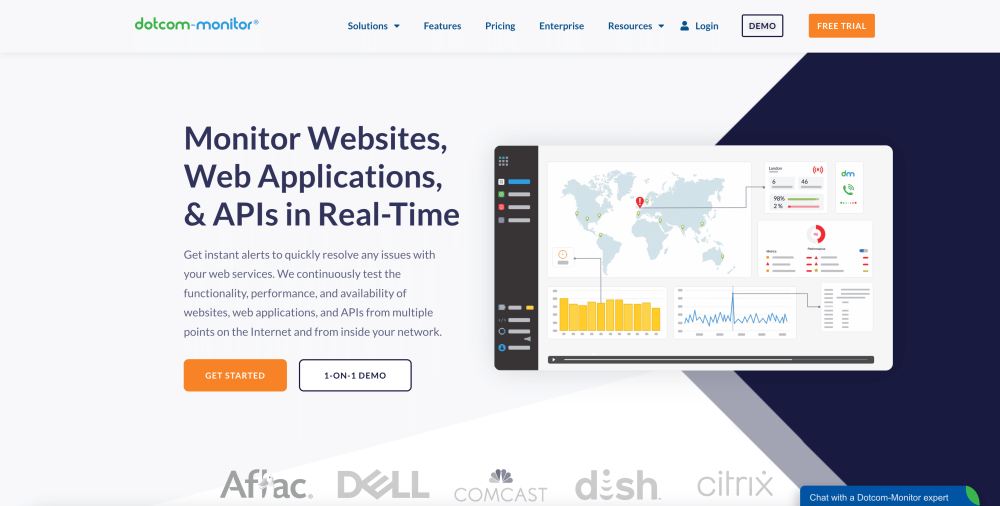
The Dotcom-Monitor platform is a SaaS-based solution that offers a broad range of synthetic monitoring solutions. With this synthetic monitoring tool, you can monitor web services and APIs like SOAP and REST. Also, you can monitor web pages from many types of desktop and mobile browsers/devices and monitor web apps with multi-step transactions. As well as this, you can attain complete end-to-end tracking for email, web servers, and protocols like FTP, VoIP, ICMP/Ping, as well as others for internet infrastructure.
Grafana
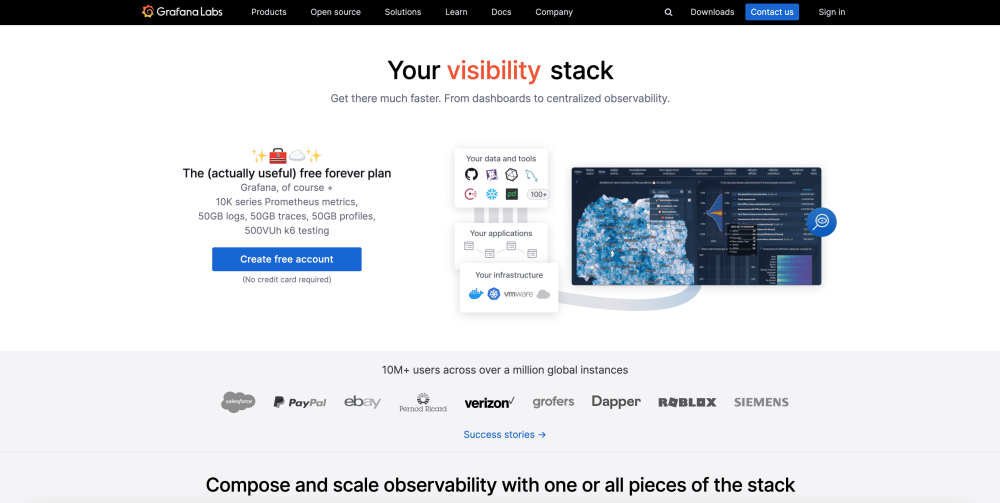
Grafana is a multi-platform open-source analytics and interactive visualization web application. To utilize Grafana as a synthetic monitoring tool you will need to add the synthetic monitoring plugin. This will provide you with insights into how your applications and services are behaving from an external point of view. Then, you can use Grafana’s powerful dashboard and visualization capabilities to effectively monitor and analyze your data.
Splunk
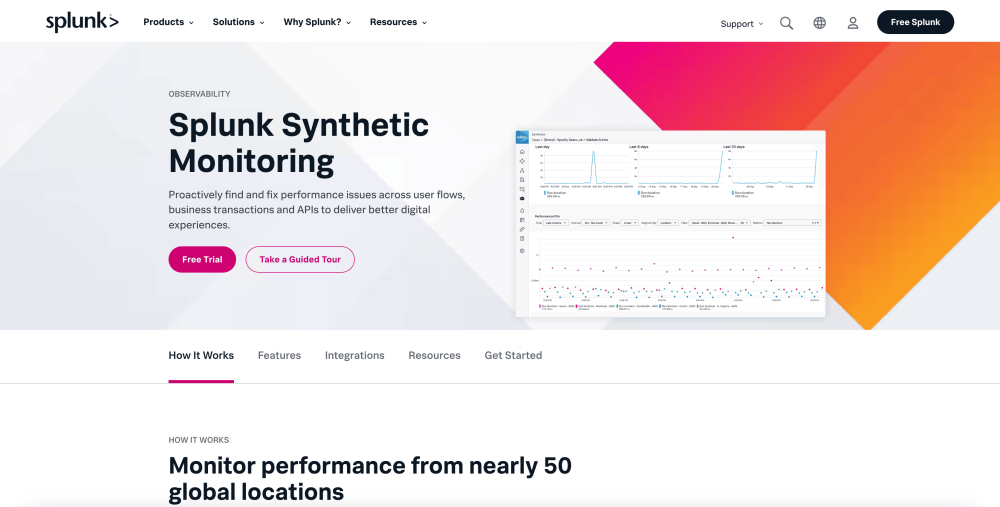
The next synthetic monitoring tool included in our list is Splunk. The tool enables you to monitor performance from almost 50 global locations optimize web performance and rectify issues much quicker. As well as this you can also automate performance within dev pipelines and utilize Splunk's collection of over 300 optimization recommendations to fix defects and enhance the user experience across their entire journey.
SolarWinds Pingdom
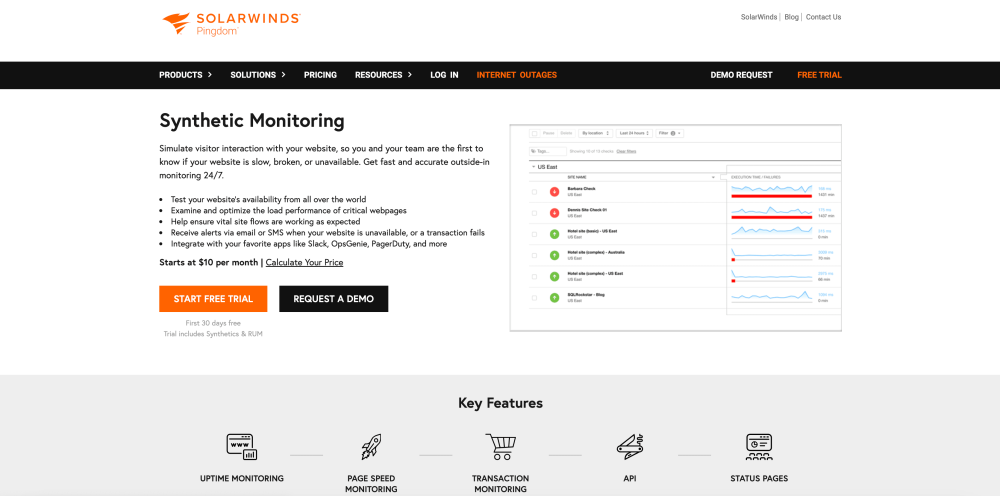
With SolarWinds Pingdom, you can ensure that you and your team are the first to know about any slowdowns, malfunctions, or unavailability of your website by simulating visitor interactions. With this synthetic monitoring tool, you can monitor critical metrics such as webpage load times to determine if the user’s device, network, or browser is at fault, or if your back end needs to be optimized. As well as this you can use performance insights generated by Pingdom synthetic monitoring within your existing systems or portals with the Pingdom API.
Checkly
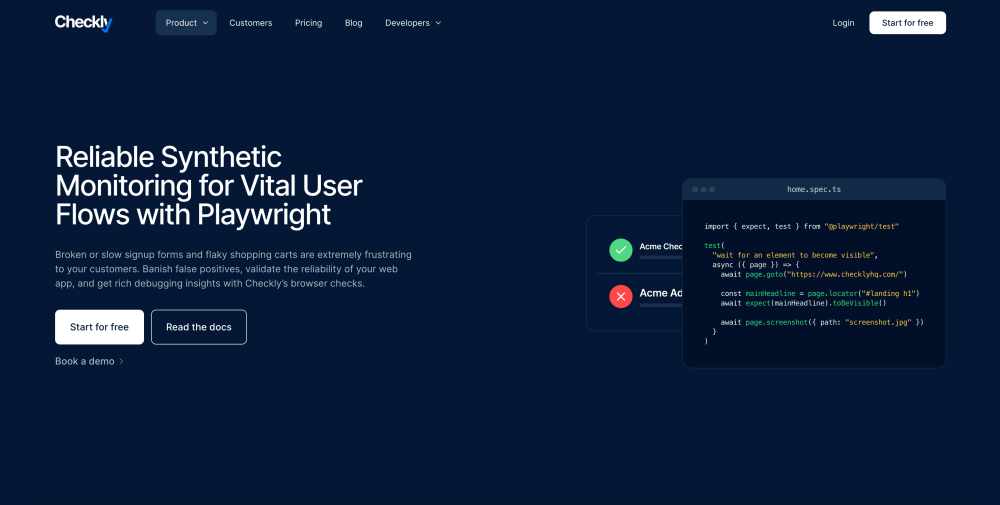
The final tool that completes our list of the leading synthetic monitoring tools is Checkly. The tool offers browser checks that operate in actual Chrome browsers to achieve a 100% match with real-world conditions. With Checkly, debugging is simplified as you can automatically collect error traces and screenshots or videos for rapid debugging post-alert. As well as this the tool offers the ability to write your browser checks in TypeScript.
If you've enjoyed this article why not read our list of The Top 8 Network Monitoring Tools or read about What is Network Monitoring?
